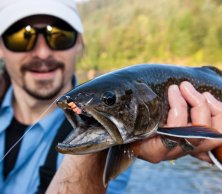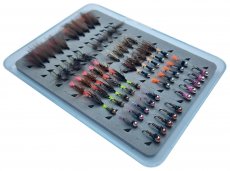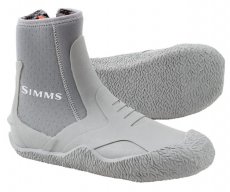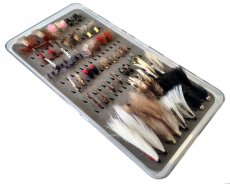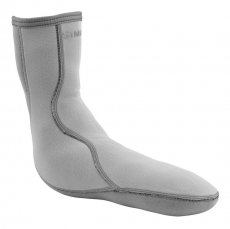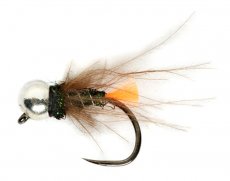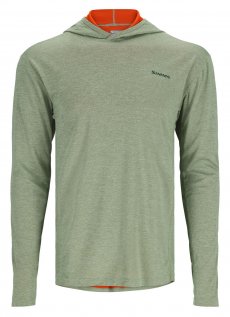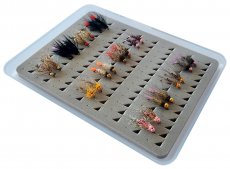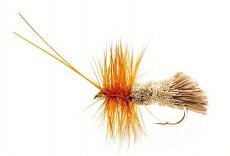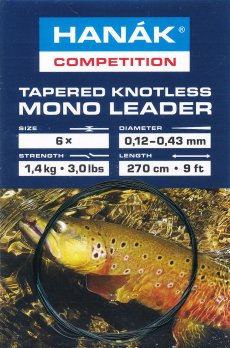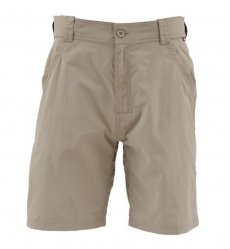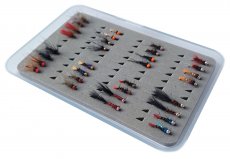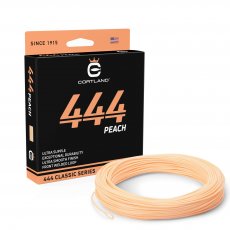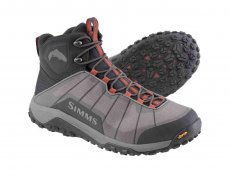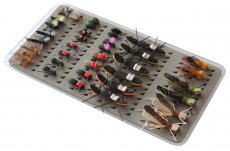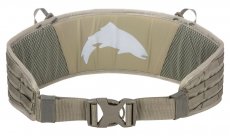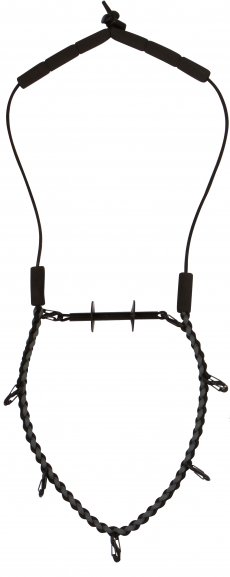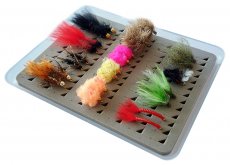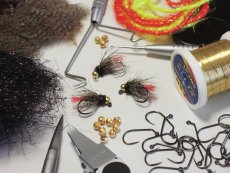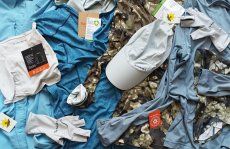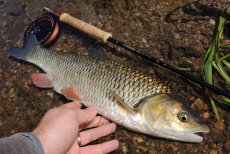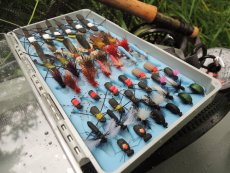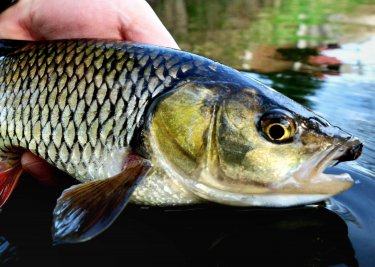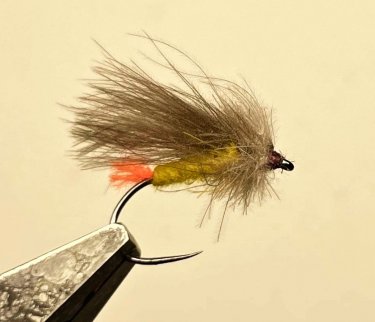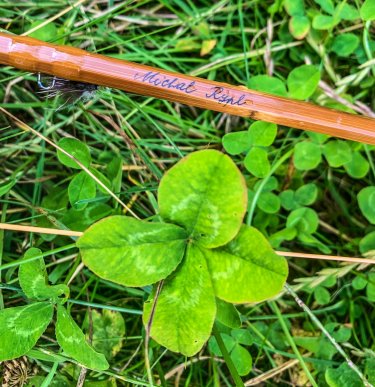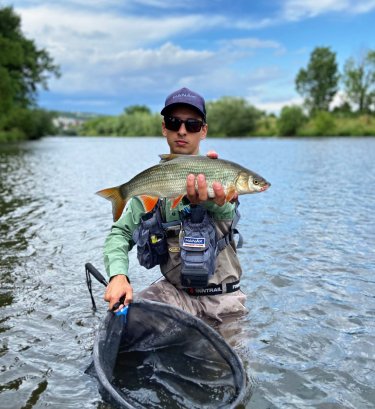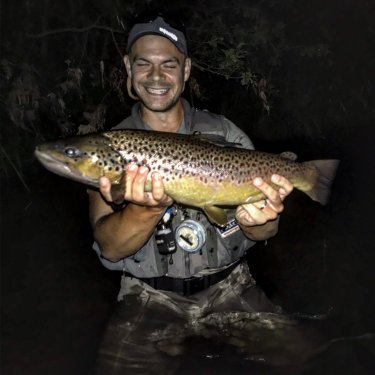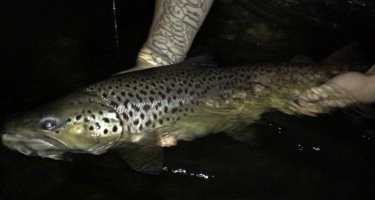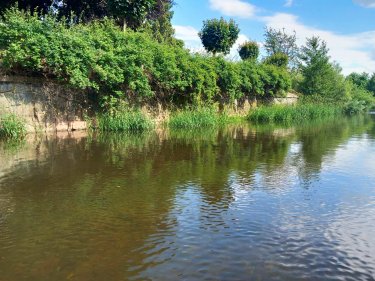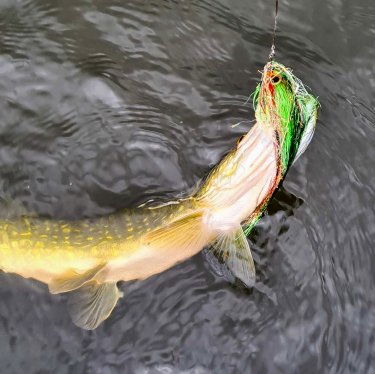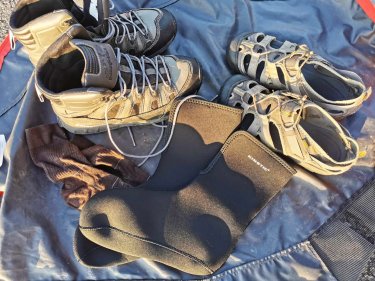The summer season is at its peak, which is why I again contacted all our CzechNymph ambassadors to see if they would briefly describe their TOP fishing tips for this hot season. Some of the recommendations came together so beautifully and naturally that nothing can be said other than that they are truly guaranteed and proven advice on how to be the most successful!
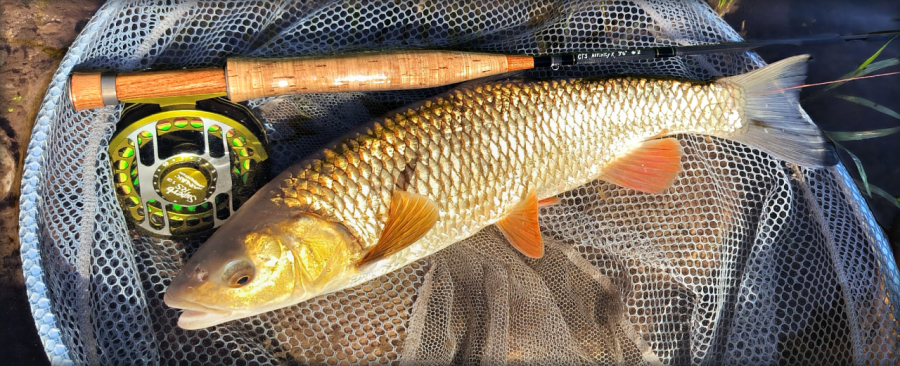
🎣 VOJTA UNGR
In the summer, I let the trout rest and prefer to go to non-trout waters. Coarse fish don't mind warmer water and lower flow. I mainly go to Berounka, Litavka and Úslava river, where I fish mainly wet style. I enjoy those vigorous strikes, when the fish almost rips the line out of your hand and the water boils and splashes after the strike. I love it! Here are some tips on how to be successful in wet fly fishing for coarse fish this summer:
- Choose a thicker fishing line (0.12 - 0.16 mm) than when fishing with dry or nymph. In a slightly colored non-trout river it doesn't matter and the strikes tend to be really fair.
- Do not make unnecessary waves when wading.
- Believe that you will cast wet flies better with a line with a WF taper than with a DT.
- Don't be afraid to use larger flies - even size 10 - 12. In summer, fauna and flora are at their peak.
- Try even faster and more provocative flies.
- Always bet on the proven Orange Tag fly, it never disappoints. Other flies can be black, blue or green, always hairy and with some colored attractor.
- Cast the flies all the way to the bank, right to the grass, where the biggest chub tend to hide.
- Look for places with deep water - ideally ankle to knee deep. Try both slow water and faster currents.
- Don't be afraid to cast into the shallows you're about to walk through. Even chub can be there.
- Go fishing in the morning or evening, the fish tend to be most active during the summer. During lunch, you'd better have a cold beer somewhere by the pond.
And above all, enjoy your free time in nature, that's the most important thing!
🎣 TONDA PLESKAČ
The summer season has begun, and that means only one thing - long warm days with low water in the rivers and lots of insects. So everyone repellants and build rock dams so that at the end of the day we can catch that one trout in the one pool in the river we create.
In the summer months, I prefer to use the dry fly fishing method! The fish in the river are active and can be catch easily even if they are not rising. That's why I usually choose a larger caddis with a colored tip that can provoke the fish to take a fly. The fish wants a good bite, so don't be afraid to use a size 10 or 12 hook.
I use a tapered leader from the company Hanák Competition with a length of 270 cm. I insert the leader into the fly line and tie a micro ring to the end. I already connect the 1-meter-long fishing leader to it and finally one fly, the just-mentioned croaker, which I have the most tried and tested during summer days.
Try different areas in the summer, in the Czech Republic we have a lot of beautiful rivers that we can visit. The day is longer, so go for it - head out to the water and let yourself be enchanted by summer dry fly fishing.
🎣 MICHAL RYPL
I really enjoy summer fly fishing! Because I love catching "lightweight". In the months of July and August, I hardly ever use waders and my equipment consists only of a cap, a SolarFlex BuggStopper Hoody - a really effective hooded shirt against mosquitoes, swimming shorts and neoprene socks with wading shoes protect my feet. Around my neck I wear a chest box lanyard from C&F Design, on which hangs my mandatory equipment, including a net. I wear Smith Optics polarized glasses, my rod is ready for dry fly, and I like to visit places with an abundance of chub.
Because I'm really interested in the experience and not the number of fish caught, I use a bamboo fly rod built for me by Jura Chuchro. It's a little heavier than the carbon specials and requires a heavy reel to balance, but it's worth it to me. Overall, the rod is quite a bit slower, many of the smaller fish will shake off when tackled, but it's a really great feeling to catch a fish on a tackle that our grandfathers or earlier born anglers used. My line is floating WF 3 and I use mostly fluorocarbon Hanák Competition with a diameter of 0.12 mm as the end line. My leader is long and almost twice the length of the rod.
I wade up to my knees in the river. The water that flows into the neoprene socks warms up a bit and I can keep fishing until the sun goes down over the horizon. The chub, especially the big ones, are really a decent challenge on the fly. The casts must be absolutely accurate, directly to the bank or the regulation wall, otherwise the fly is hardly interested by the chub. A long leader of approx. 4 - 5 m ensures that the fly swims naturally for a long time. Sometimes it's really exciting because in clear water I can see a chub following a swimming prey and many times something will put him off the strike. Sometimes the tension of the leader and the stirring of the fly will help to excite him to the strike. At that moment, the blow comes. The size of the fish can be estimated from the shot. Smaller chub take the fly very vigorously and the shot is accompanied by a splash. The big chub, which I personally call "grandfathers", will only make a eddy on the surface in which the fly disappears. Just wait until the big mouth closes and get hooked!
I use bigger and stronger flies for chub - specifically I tie on H230BL hooks - a big sedge or Rock Chick, sometimes I like to use foam bugs with silicone legs. If you don't tie yourself, be sure to take a look at the CzechNymph fly selections.
I wish you much success in the summer season, lots of experiences and nice fish.
🎣 SAM PIEKAR
Summer is one of my favorite seasons for fly fishing that can offer us a lot of fishing experiences! However, not all of them necessarily have to be to your liking. The most important aspect of summer fly fishing is choosing the right fishing area. As a general rule, I try to avoid small watercourses that suffer from low water flows and high water temperatures in the summer months. If we add to these factors a long fight and unsparing handling of the fish, we can unintentionally spoil the fish. So I choose slightly larger rivers that have enough cold and oxygenated water. For example, current sections and rivers located below dams are suitable.
Just as mosquitoes make life unpleasant for us during summer tourism, the ubiquitous boaters will also make it unpleasant for us during summer fly fishing. It is therefore important to avoid the main waterways. From personal experience, I must say that summer fly fishing on the Vltava river among hundreds of boaters and rafts is a very unpleasant experience. If you still can't resist fly fishing one of these rivers, try to time your fishing closer to the morning and evening hours, when the concentration of anglers is lowest and fish activity is highest on hot summer days. So, if you want to succeed in the summer and have a chance for a bigger fish, don't be afraid to get up.
Fish are less alert in the morning, and you avoid unpleasant heat. Of course, it is also possible to catch during the day, especially during the colder days, but you have to realize that the fish will not be so active during the day and it will be more difficult to catch them. So you will have to approach the water as carefully as possible, you have to be careful not to make unnecessary waves and not to cast too much shadow in the water. In such cases, I recommend you to fish on your knees, thanks to which you will reduce your silhouette. Another factor that will increase the chance of getting a fish strike is the overall refinement of the set. Therefore, if you will be without strikes for a long time, it is necessary to use a thinner leader. Of course, you can also reduce the flies.
Top Tips:
- Check the water flows in the areas where you will be fishing. If the flow is low, choose another area. To monitor flows, you can use applications of individual basins.
- If you want to be calm by the water and at the same time have a chance of a nice catch, then be at the water from early in the morning.
- During the day, avoid the main boating trails (Vltava, Otava, Sázava...).
- Move as carefully as possible in the water, in shallow water it is important to kneel.
- Don't be afraid to fish lightly (thin line + small flies).
🎣 VLASTÍK OTAVA
In the summer, I like to go to the evening rise. It was a few days ago that a memory came to me on Facebook, when I caught my biggest brown trout 4 years ago! As if it were yesterday... It was a hot summer day and my wife, sons (the second one was still in the womb) and a friend went on vacation to the sea. My friend Pavel and I agreed that we would go to the evening hatching. Around 7 pm we gathered by the water and started getting ready. The activity of the rising fish was not quite optimal yet, but they slowly began to make circles on the surface. After about half an hour of fishing, there was practically no place where a fish did not show up! We caught beautiful brown trout around 40 cm and we sometimes "interspersed" rainbows from the 40+ category.
Just a great catch. I came to one place where I saw a bigger fish being rised! I was wading about halfway down the river and at the other bank there was a tree whose branches reached into the water, then there was a gap of about 3 m and at the end was a bush that also reached into the water. I focused on the place and watched what was going to happen... When something happened in it that I had thought could only happen in New Zealand. A huge trout head emerged from the water, followed by a dorsal fin and then a tail. After observing for a while I was sure it was a huge brownie!
Just seeing this show was an unforgettable experience! I figured a fish like this would need a bigger bite, so I put in a #12 size dry gray sedge with a green tip and oiled it thoroughly with CDC oil. Here I have a TIP regarding the use of CDC oil: The fly does not have to be completely coated with a large amount of oil, it has the opposite effect. I do it by turning the fly upside down and putting one precise drop of oil in the place where the wing starts. I let it soak and it's done! The oil is thus released in such an optimal amount when casting - the fly is not completely "glued", it floats beautifully and can withstand several fish!
I start casting to the fish... After about 45 minutes I still have no success! I change the flies, the size, but still nothing. I therefore return to the original plan. I cast the bait and the fly floats beautifully on the surface... Suddenly it disappears into a huge mouth and... FISH ON! A jump follows and the fight begins!
The fish is going under me, which is not exactly optimal. The second jump - my friend Pavel has already seen it and he is running towards me with a net! "Did you see that???" I ask him. "Yes he saw" he replies. I tell myself that I can't lose this fish, but as soon as I said that, the third jump followed and the fish was gone! I look sadly at Pavel, who is standing a little below me with a landing net in his hand.
Devastated by what just happened, I wade to the shore and sit down in the grass. In my mind I'm thinking about selling all my fly fishing equipment... This wasn't supposed to happen! The activity of fish collectors is still huge. After a moment of self-pity, I kind of knocked myself out and decided to go into action again. I'm catching more nice browns and rainbows around 40 cm but I'm not enjoying it at all and I don't feel like casting to any rising fish after losing that huge brownie!
It's getting dark, there's almost nothing to see, just wheels on the surface. We cast to fish and blindly hook when we see a activity in a place where our fly could probably be. At that moment, it seems to me that a fish is nearby, which might be bigger than the others. I start casting at it and after a few failed attempts it makes a circle in the place where theoretically my fly could be! I carefully hook and boom! A big fish jump out of the water and I experience Deja Vu!
What is it, I ask Pavel in disbelief! What follows is a fight that is not easy at all - the fish is not visible at all in the dark and I have no idea where the fish is going. It's nerves... One jump, another jump... Fish still on the rod! "That's not possible" I say to Pavel, who is standing below me and trying to locate the fish and get it into the net. Finally we manage to get the fish in the net! I don't know how, but it's there and it's a beautiful brown trout! We quickly measure it and the meter shows 56 cm!
Whether it was the same one that fell to me before, or whether it was a completely different fish, I have no idea! But it didn't really matter at that moment! I think the photo of me with said fish says it all and needs no further comment!
In conclusion, I would just like to say that even if you don't do well on the fish one day, it's good not to give up and fish until the very end. Sometimes it all turns around and ends up with a Happy Ending!
🎣 MICHAL MACHAČKA
Although I have the trout Elbe literally behind my house, most of my summer expeditions are aimed at non-trout waters. I enjoyed fishing for chub, roach and other fish found there. I like the diversity of species and you simply don't know what you will "hang" there. I have been carrying two rods to the water for some time now. One for dry + Dry+Dropper and the other with a nymph. Of course, it would be enough to take a universal with an extension part and just lengthen/shorten the rod, or change the spool on the reel and thus change the way of fishing. But I'm fine with two rods. I like sunny days when the chub are drawn to shallow and warm places near the banks and grasses. I always prepare a Superb XP 390-4 rod with a dry line and have fun hitting the dry fly in places where I suspect fish (and they usually are). Shallows and holes in the grasses are their favorite places.
The first cast is usually the key. The fly should be delivered as close to the shore as possible, preferably with a pretty loud impact. Forget about any delicate presentation here. The chub likes a commotion. Then a sharp strike usually follows. Another very good technique is to cast the fly up to the coastal vegetation and "drop" it into the water. This requires more practice, but it is also very good fun when you succeed repeatedly and the fish willingly takes the fly. I mostly fish with a size 14 CDC Caddis or Rock Chick in the same size and a 0.10 mm line. For some it may not be enough, but for me it is the optimal average for summer dry fly fishing. If there is little water and it is clear, I use a diameter of 0.09 mm, but this requires more self-control. However, even such an adjustment of the line strength can be decisive and can turn an unsuccessful day into a successful one.
If the fish don't take dry flies presented like this, I change the leader and use a Dry-Dropper combination. For these purposes, I have several ready-made leaders on foam spools in my vest, and changing the leader is a matter of a few minutes. Again a sedge and under it some smaller, hairy nymph with a tip. Orange Tag, Pink Tag and the like. True, it is more swimming, but the adrenaline rush when a dry fly suddenly sinks is also worth it - try it!
There are also deep places on the rivers where my summer expeditions go. Then I fold my dry rod and take the nymph from the vest. From the first moment I tried the Superb XP 196-4, I literally fell in love with this rod. Of course, it is not a rod for big water, but it is quite enough for those "my rivers". I pass each deeper hole with a nymph. I mostly stick to a line diameter of 0.10 mm (sometimes even 0.09) and present the fish with two small nymphs in size 16 - 20 with a 2.0 - 2.8 TG bead.
I also use fishing with one nymph for precise catching under trees. When you come across a school of roach or perch, you are in for a long time of entertainment. It is good to liven up the flies and thus provoke the fish to bite. You will then find out for yourself what the fish like and at what presentation or movement they take the nymph from you.
This is how I go through a fishable section of the river and keep switching styles. If one method stops producing fish, I try another and so on and on. It really pays not to be lazy and try. What worked here yesterday may not work today and you need to look for what fly presentation the fish like that day.
Of course, you need to move carefully around and in the water, move slowly, watch your shadow and don't unnecessarily alarm the fish even before you present your fly to them.
Good luck to you all and enjoy your sunny days on the water!
🎣 VERČA SMOLOVÁ
For me, summer is, among other things, also about fly fishing for pike. If you are thinking about expanding your fly fishing equipment with a slightly heavier rod specifically for pike fishing, definitely do not hesitate and go for it. That rush of adrenaline when you tackle this predator "only" with the help of a fly line, you will soon want to experience it again.
In addition, fishing with streamers is also interesting in that the fish do not know this type of bait so much, and the fishing tends to be more successful all the more. So when you're filling your first box of streamers, choose as natural shades as possible, but don't be afraid to go for slightly bolder colors as well. From personal experience, I have to say that the ones that imitate perch work great.
🎣 PAVEL ADAMOVSKY
Summer is ideal for light fishing and one way to "lighten up" is to leave your waders at home! Especially when fishing non-trout fishing areas during the summer the water temperature is refreshing and this is an ideal time for "wet wading". When fishing in familiar terrain, it is possible to fish comfortably in "Crocs" or "Keen" sandals, but for more serious wading I recommend a combination of wading shoes and neoprene socks!
Thanks to the boots, you will maintain the same stability as in classic wading, and the neoprene socks will serve as a stable padding for the wading boots (instead of socks for waders), and at the same time protect your feet from sharp stones and other obstacles under the water surface. In addition, during a longer stay in the water or if the water is colder, they will help keep your feet relatively warm.







